
Share This:
You’ve got your routines, you’ve explicitly taught phonics the entire year, and your kids are growing as readers. But then flu season comes around and all bets are off. I know how hard it can be to find quality materials to leave with a substitute. Sometimes it is easier to just make it through the end of the day, rather than deal with having to write sub plans.
So today, I’m sharing phonics activities you can leave with a substitute that are aligned to the science of reading. Many of the resources are my own, but I also reached out to my audience and asked if anybody had products that would work, so you will see a mixture of both. If they are not from me, I indicate that in the heading!
When you’re planning for a substitute, I think the most important thing to remember is this–their day will not be as powerful as it would be if they were there with you. I know we want it to be, but there’s nobody that’s as important as you in that classroom.
But that doesn’t mean it can’t still be meaningful and help bring our children further as readers. The benefits of leaving phonics materials for a substitute are two-fold: there’s a lot of quality materials out there, and it’s an opportunity to give students the practice they need to become automatic with specific skills.
If you have some set routines in place, like using sound decks, dictation, or decodable folders, they can all be options for the sub. But if you’re in a jam, and you just need something meaningful that doesn’t need a lot of directions, the resources below can be of great help.
This is one of those resources that is so simple and effective, I can’t believe I didn’t start using the PowerPoints years ago. In order for a substitute to use them, all they must do is have access to the PowerPoint and a way to project them.
There are 8 different PowerPoints to choose from, including CVC, digraphs, blends, magic e, r-controlled vowels, welded sounds, vowel teams, and diphthongs.
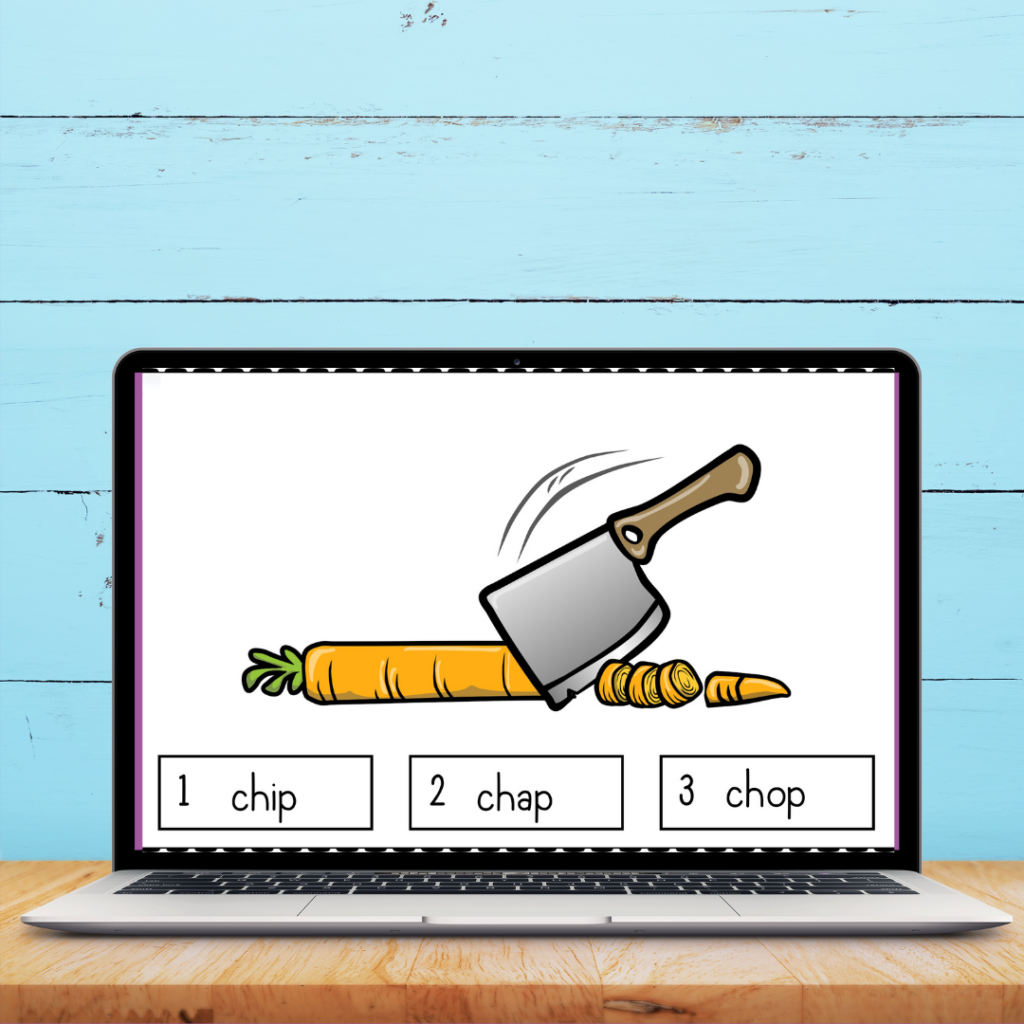
Each slide shows a picture, then three choices for the correct spelling. All three choices are visually very similar, so the student must look through the entire word to determine the correct answer.
I’ve had some people that were worried about a picture being included, saying that it would lead to guessing. This is different, however, than the “look at the picture” mindset of reading. The students are given the word, and they have to use sound-symbol correspondences to determine the correct spelling.
With word chains, you start with a word. Then, you change one sound (it may be more than one letter) each time to create a new word. A sample chain might be: play, pay, ray, gray, grain, train, rain, pain, paint.
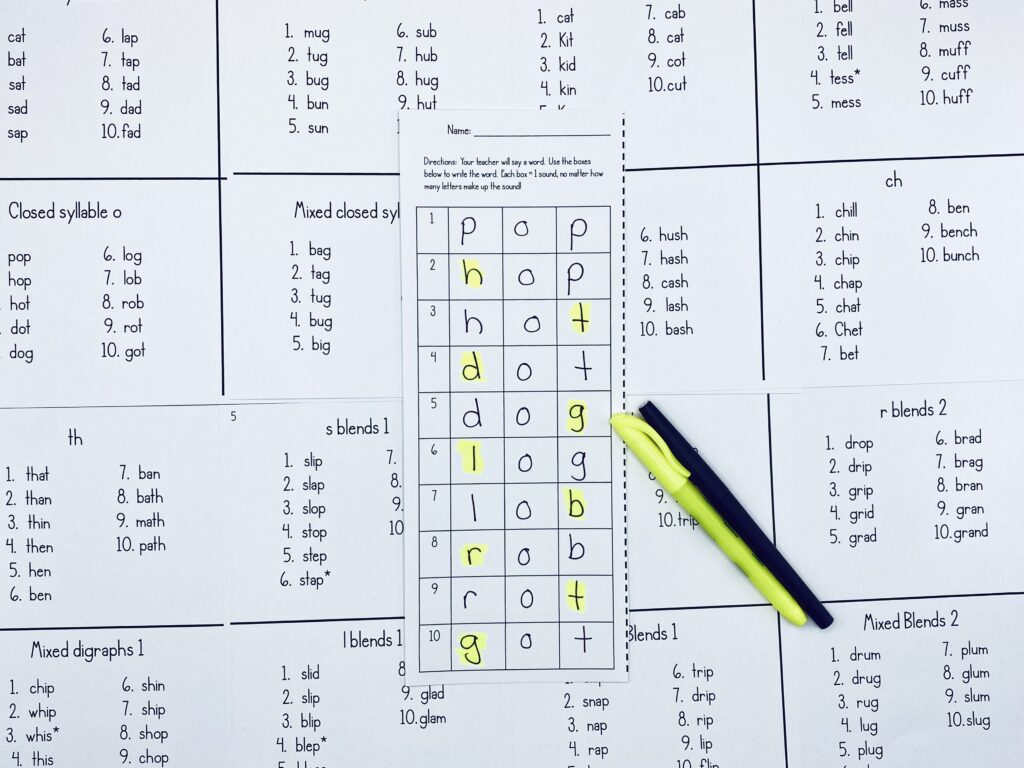
I’ve created 59 lists that are ready to go. In your plans, I would just write “Have students pull out a dry erase board. Tell them the first word, then ask them to change a sound each time to create the new word.” Ask students to say the sounds as they are spelling.
Word chains strengthen both phonemic awareness and phonics, as students must decide where the sound is, then the appropriate grapheme that represents that sound!
This pack is a sick teacher’s dream. There are so many no-prep, meaningful activities that students can do. From the code and find coloring pictures, to the code a word activity. All of these activities are focused on taking the sounds in a word and matching them to the symbols that represent those sounds.
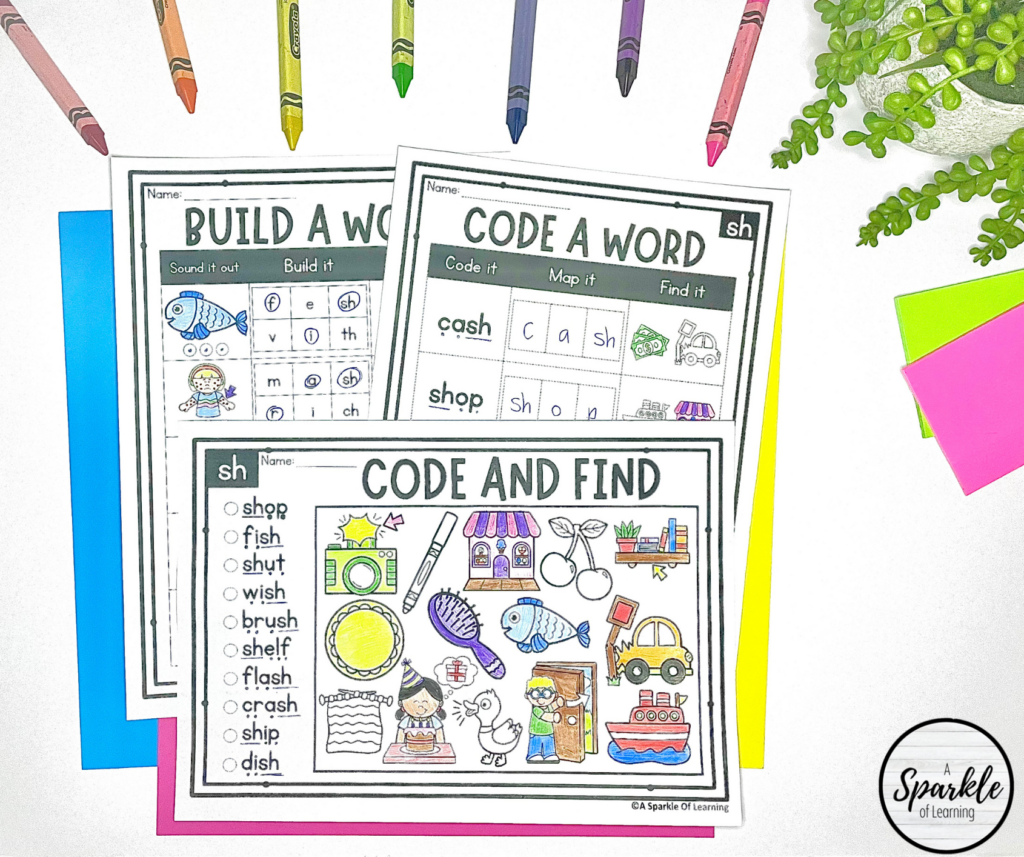
I originally created these color by codes for my students for two reasons. One, I needed something for them to do independently while I was progress monitoring. Secondly, I didn’t like the color by codes I saw on the market. Everything was basically a match of “color all the words ‘said’ blue.” The kids didn’t have to do any reading or phonics work at all.
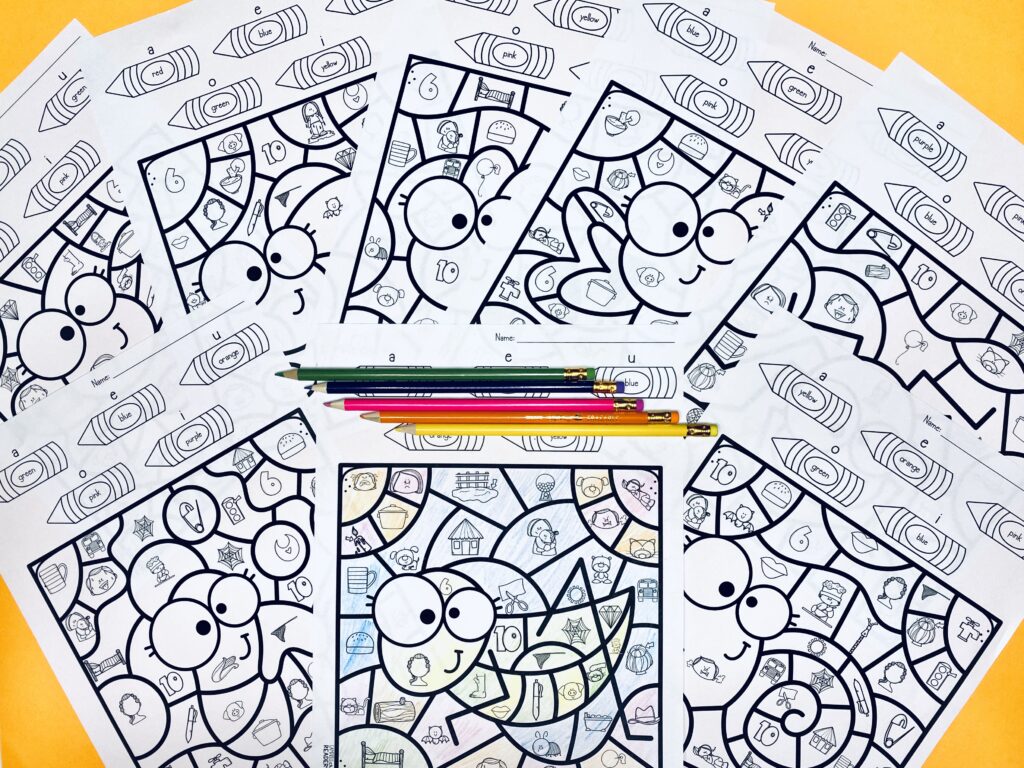
Even though these color by codes have pictures, they require more phonetic knowledge that typical color by codes. Students are given a target grapheme at the top, like short vowel sounds, digraphs, or blends. Then, they have to look at the pictures and decide which pictures match that target grapheme. For example, in the grasshopper example above, all images with a short u sound need to be colored blue.
Simply leave the worksheets (and the included answer keys) with your substitute, and your kiddos will have a meaningful, authentic way to practice phonics skills while you’re not there.
If you don’t know Mikaela from Project Based Primary LLC, I’m so happy to be the one to introduce you. She specializes in early literacy, PBL, and developmentally appropriate instruction for children.
Today, I’m sharing one of her no-prep packs with you—short and long vowels. This would be perfect to leave for a kindergarten or first grade sub. There’s cut and paste sorts, coloring vowel sounds, matching pictures and more.
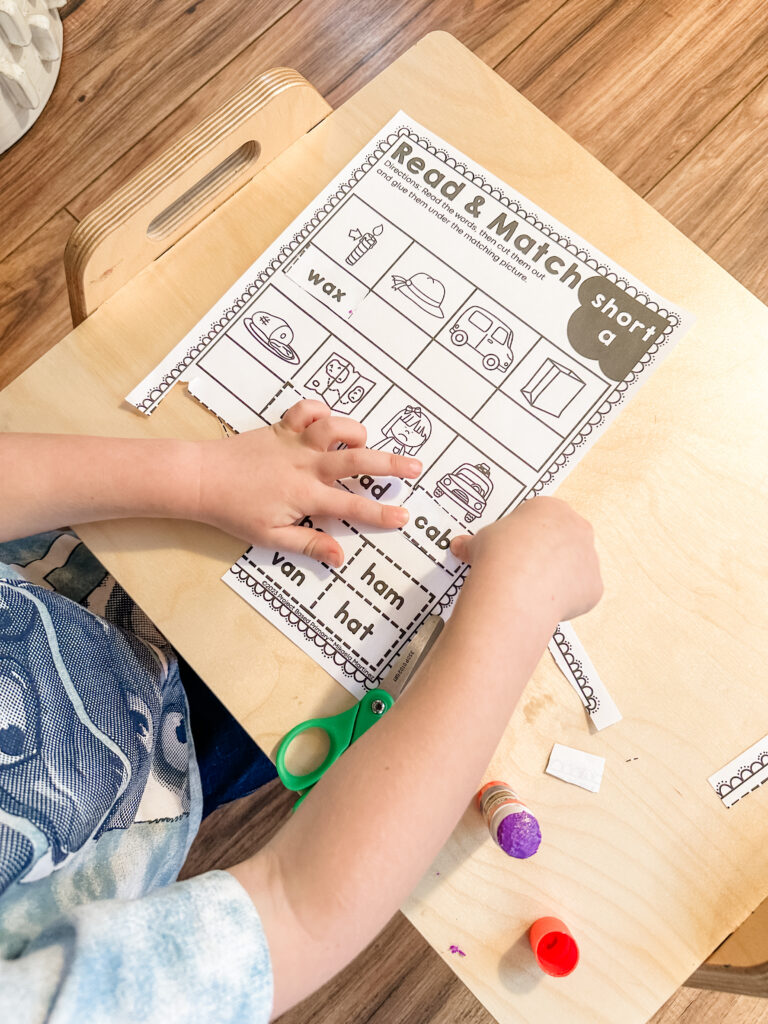
I created picture sorts as an alternative to word sorts. I noticed that when my children were completing word sorts, it was just a matching game (much like those color by codes I was discussing!). For example, if they were comparing CVC a to aCe, they would just look for all the words that ended with the letter e. Matching is not reading.
So I looked to create something different.
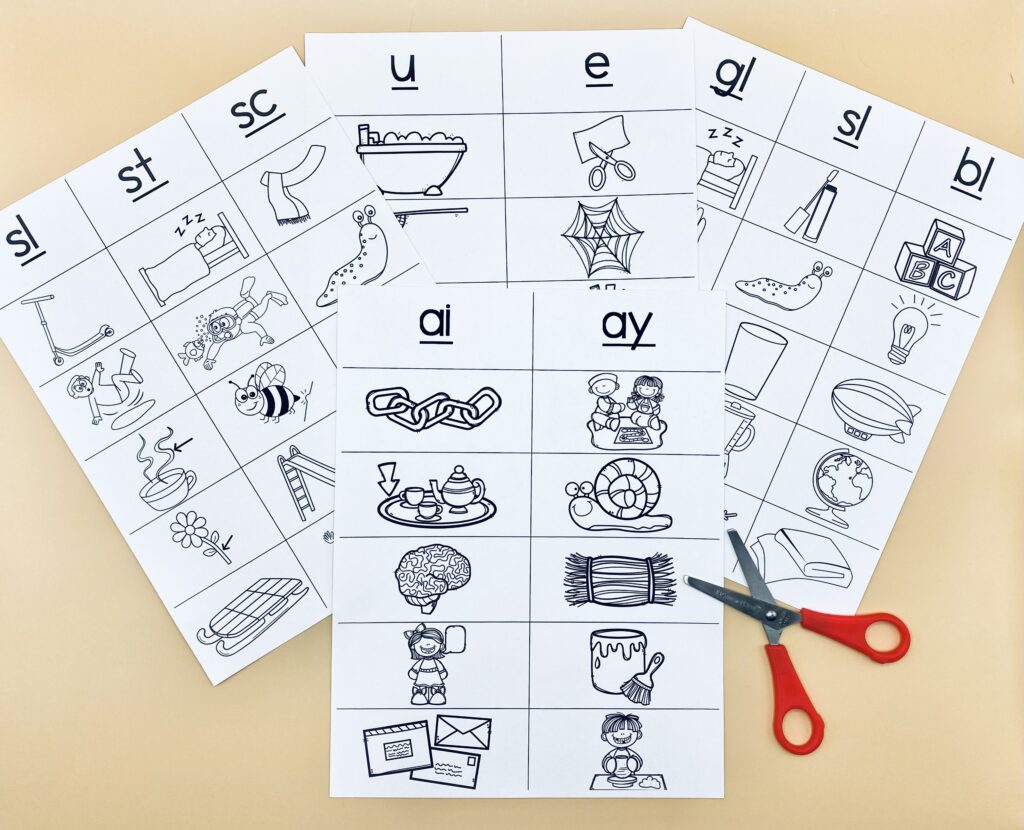
Picture sorts seem simple, but they actually require a lot out of kids. With a picture sort, you have headers, like “a” and “aCe.” Then, children look at pictures and must decide the appropriate sound and place that picture underneath. No guessing, because students have to use what they know about sound-symbol correspondences to be successful.
To leave this with a substitute, choose a sort that can reinforce skills you’ve already taught–I don’t like to have a substitute introduce a new phonics skill to my students.
There aren’t too many games that can be played whole group, but bingo is one of them. And phonics bingo can’t beat beat. These bingo games target specific skills–everything from short vowels to digraphs, blends, magic e, vowel teams, and more!
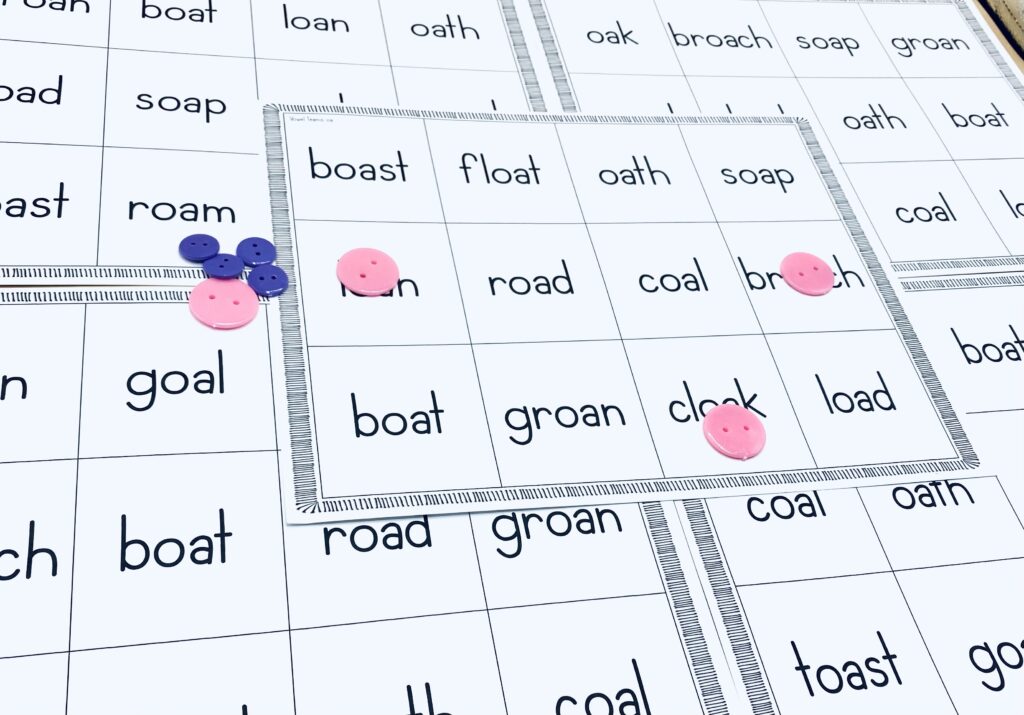
When I play phonics bingo with my students, I choose a skill. Each student gets a different bingo board. BEFORE we begin playing, I ask my students to read all the words on their board. It gives them extra practice reading and speeds up the game process!
Let me say this–there is nothing Christina Winter makes that I wouldn’t want to get my hands on. I call her mama, and for a good reason. She is constantly leading me and helping me make my way through this world of structured literacy. She is a true gem in this community.
I had to choose something instead of everything, so let’s talk about her decodable passages. The beauty in her decodable passages is that they come with a scripted lesson plan. So she gives you both the plans and the product. All the substitute has to do is print and go!
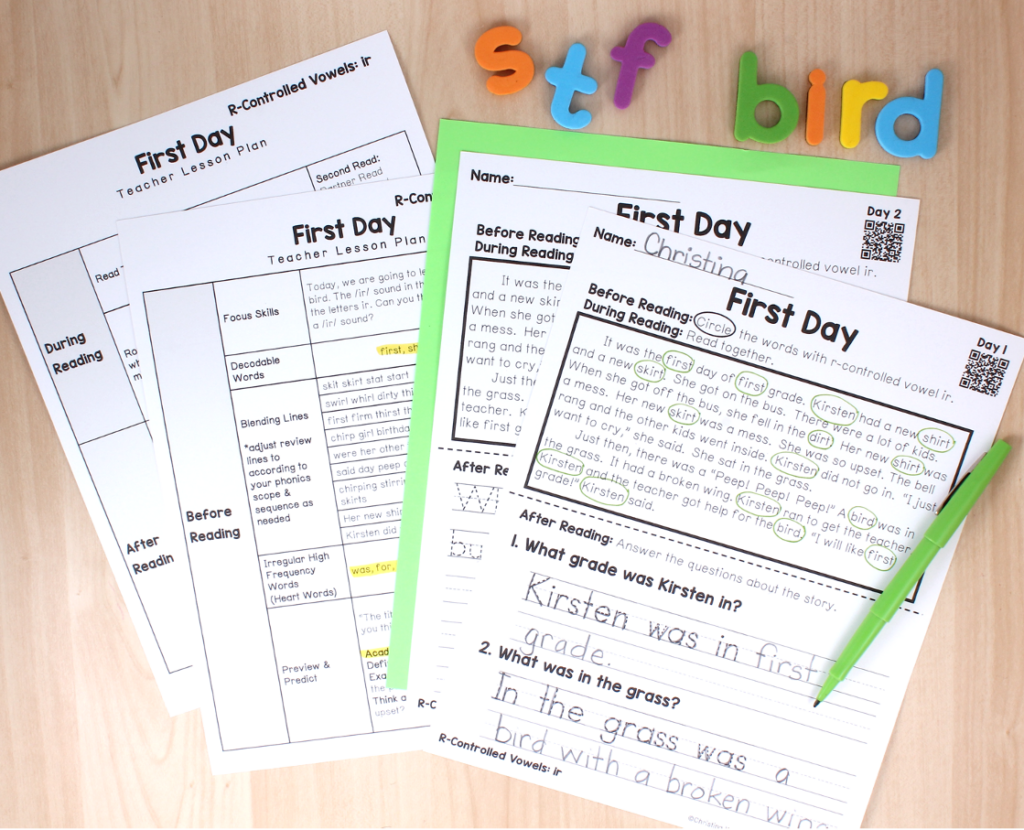
To play these games, all students need is the game board, dice, and something to mark their spots with. Students will roll the dice, then read the first available word in that column. They take turns, going back and forth. Whoever reads the final word in a row gets a point. Most points at the end of the game wins!
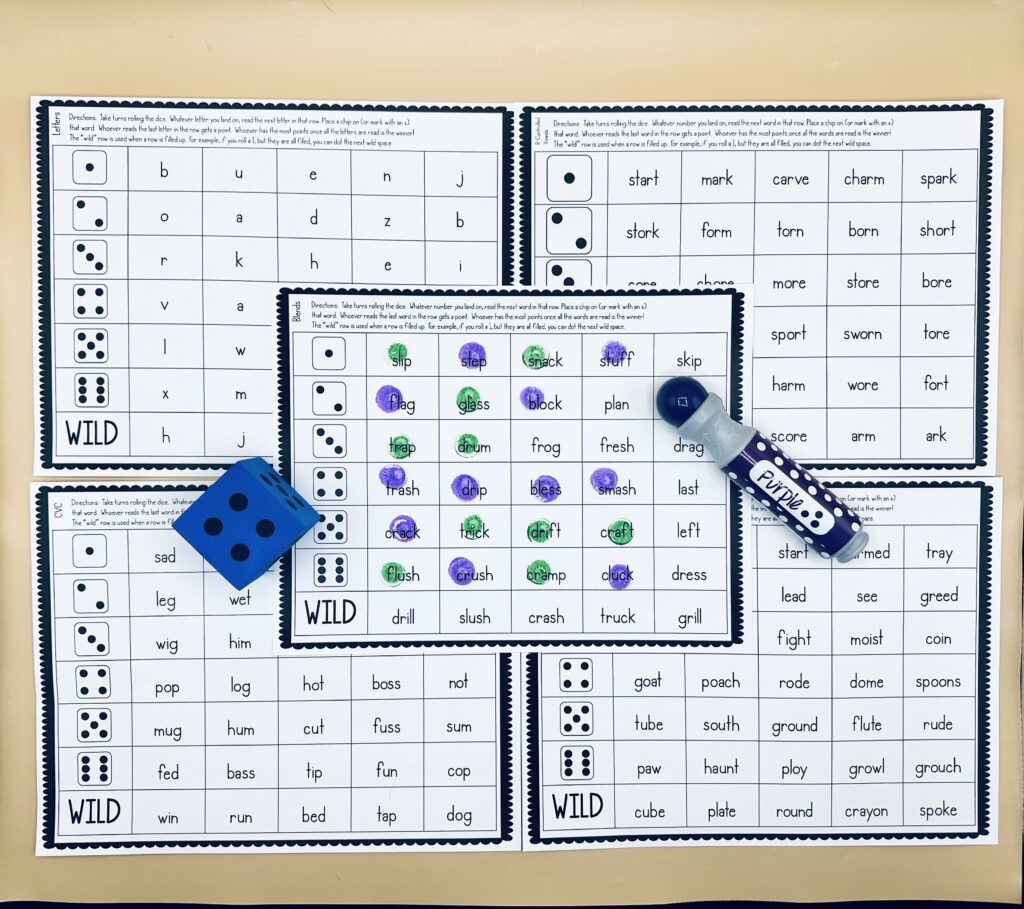
Planning for a substitute is stressful. Many times, we’re not feeling well and we’re struggling to come up with something meaningful last minute. Each of these activities can give your students meaningful, authentic phonics practice when you aren’t there. So that you can rest easy knowing that best practice is still happening, even when you’re not in the room.
Share This:

Savannah Campbell is a K-5 reading specialist. She has taught her entire 12-year teaching career at the school she went to as a child. She holds two master’s degrees in education from the College of William and Mary. Savannah is both Orton-Gillingham and LETRS trained. Her greatest hope in life is to allow all children to live the life they want by helping them to become literate individuals.

Savannah Campbell is a K-5 reading specialist. She has taught her entire 12-year teaching career at the school she went to as a child. She holds two master’s degrees in education from the College of William and Mary. Savannah is both Orton-Gillingham and LETRS trained. Her greatest hope in life is to allow all children to live the life they want by helping them to become literate individuals.
Feeling overwhelmed with all the terminology out there? Want to know the key terms all teachers need to teach phonics? In this FREE Rules of English cheat sheet, you get a 5 page pdf that takes you through the most important terms for understanding English—you’ll learn about digraphs, blends, syllable types, syllable divisions, and move. Grab today and take the stress out of your phonics prep!
